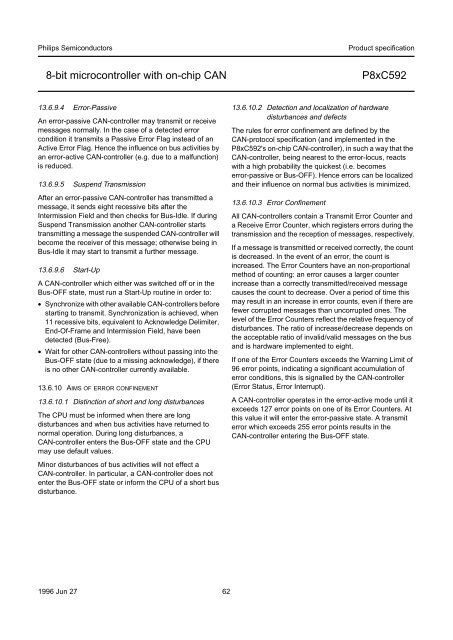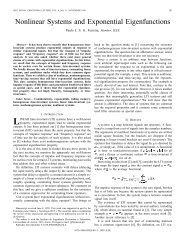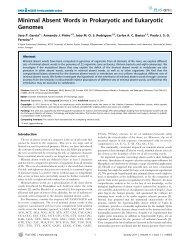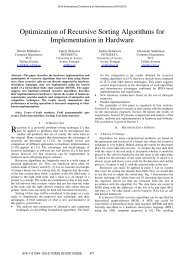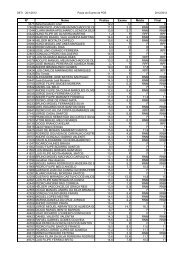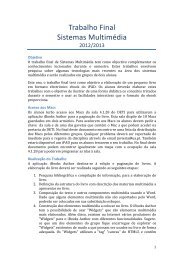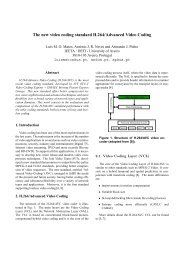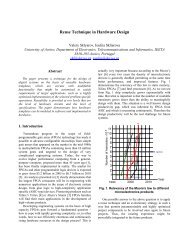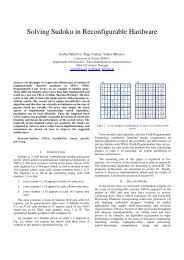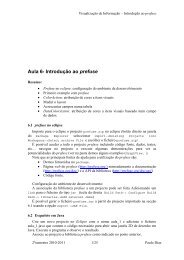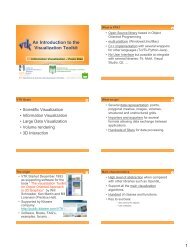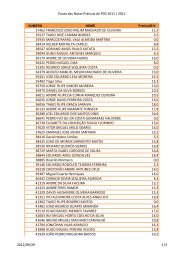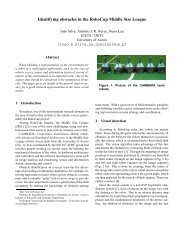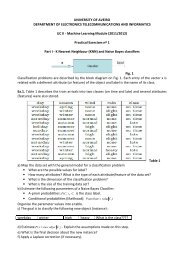DATA SHEET - IEETA
DATA SHEET - IEETA
DATA SHEET - IEETA
You also want an ePaper? Increase the reach of your titles
YUMPU automatically turns print PDFs into web optimized ePapers that Google loves.
Philips Semiconductors Product specification<br />
8-bit microcontroller with on-chip CAN P8xC592<br />
13.6.9.4 Error-Passive<br />
An error-passive CAN-controller may transmit or receive<br />
messages normally. In the case of a detected error<br />
condition it transmits a Passive Error Flag instead of an<br />
Active Error Flag. Hence the influence on bus activities by<br />
an error-active CAN-controller (e.g. due to a malfunction)<br />
is reduced.<br />
13.6.9.5 Suspend Transmission<br />
After an error-passive CAN-controller has transmitted a<br />
message, it sends eight recessive bits after the<br />
Intermission Field and then checks for Bus-Idle. If during<br />
Suspend Transmission another CAN-controller starts<br />
transmitting a message the suspended CAN-controller will<br />
become the receiver of this message; otherwise being in<br />
Bus-Idle it may start to transmit a further message.<br />
13.6.9.6 Start-Up<br />
A CAN-controller which either was switched off or in the<br />
Bus-OFF state, must run a Start-Up routine in order to:<br />
• Synchronize with other available CAN-controllers before<br />
starting to transmit. Synchronization is achieved, when<br />
11 recessive bits, equivalent to Acknowledge Delimiter,<br />
End-Of-Frame and Intermission Field, have been<br />
detected (Bus-Free).<br />
• Wait for other CAN-controllers without passing into the<br />
Bus-OFF state (due to a missing acknowledge), if there<br />
is no other CAN-controller currently available.<br />
13.6.10 AIMS OF ERROR CONFINEMENT<br />
13.6.10.1 Distinction of short and long disturbances<br />
The CPU must be informed when there are long<br />
disturbances and when bus activities have returned to<br />
normal operation. During long disturbances, a<br />
CAN-controller enters the Bus-OFF state and the CPU<br />
may use default values.<br />
Minor disturbances of bus activities will not effect a<br />
CAN-controller. In particular, a CAN-controller does not<br />
enter the Bus-OFF state or inform the CPU of a short bus<br />
disturbance.<br />
1996 Jun 27 62<br />
13.6.10.2 Detection and localization of hardware<br />
disturbances and defects<br />
The rules for error confinement are defined by the<br />
CAN-protocol specification (and implemented in the<br />
P8xC592's on-chip CAN-controller), in such a way that the<br />
CAN-controller, being nearest to the error-locus, reacts<br />
with a high probability the quickest (i.e. becomes<br />
error-passive or Bus-OFF). Hence errors can be localized<br />
and their influence on normal bus activities is minimized.<br />
13.6.10.3 Error Confinement<br />
All CAN-controllers contain a Transmit Error Counter and<br />
a Receive Error Counter, which registers errors during the<br />
transmission and the reception of messages, respectively.<br />
If a message is transmitted or received correctly, the count<br />
is decreased. In the event of an error, the count is<br />
increased. The Error Counters have an non-proportional<br />
method of counting: an error causes a larger counter<br />
increase than a correctly transmitted/received message<br />
causes the count to decrease. Over a period of time this<br />
may result in an increase in error counts, even if there are<br />
fewer corrupted messages than uncorrupted ones. The<br />
level of the Error Counters reflect the relative frequency of<br />
disturbances. The ratio of increase/decrease depends on<br />
the acceptable ratio of invalid/valid messages on the bus<br />
and is hardware implemented to eight.<br />
If one of the Error Counters exceeds the Warning Limit of<br />
96 error points, indicating a significant accumulation of<br />
error conditions, this is signalled by the CAN-controller<br />
(Error Status, Error Interrupt).<br />
A CAN-controller operates in the error-active mode until it<br />
exceeds 127 error points on one of its Error Counters. At<br />
this value it will enter the error-passive state. A transmit<br />
error which exceeds 255 error points results in the<br />
CAN-controller entering the Bus-OFF state.


